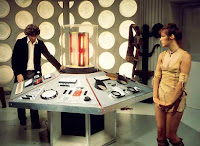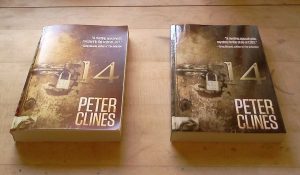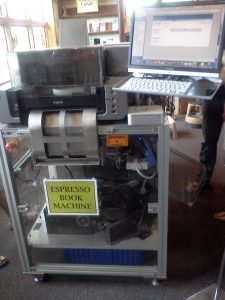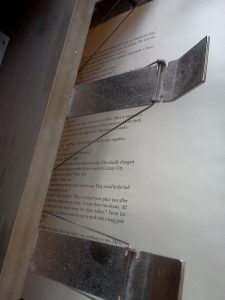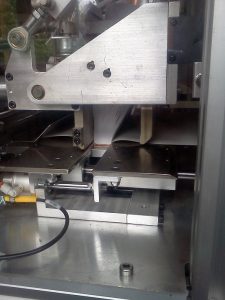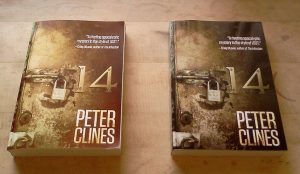I haven’t babbled on about dialogue in a bit, so I thought I’d toss out a quick idea about that.
And I thought I’d make it interesting by telling a story.
As some of you know, I worked in the film industry for several years. This let me work with a lot of storytellers of all different types—most notably (for this little rant) directors. If the screenwriter is the person who creates the story, the director’s the one who decides how to tell the story. Some of them were very good at this. Others were not.
A common flaw I saw in bad directors was an urge to make every single shot special. It didn’t matter if it was a wide shot, a close-up, a master, or coverage. Every shot required tons of set up and rehearsals and discussions and little tweaks and adjustments.
Now, I’m sure some of you are saying “Isn’t that the director’s job? To make it look good?” Well, yes and no. That is one element of the job, yes. Another one is sticking to a schedule so material gets delivered on time (very important in television and the lower-budget realms), and another one is making sure the material that gets delivered is usable and cuts together well.
So what I’d see again and again is unskilled directors who would spend hours on their first scene or two of the day, then come back from lunch and discover they still had 85% of the day’s schedule to film. And they’d do this again and again. I worked with some directors who’d do this on every day of a shoot.
And this was bad for the final product, too. All this effort was put into those first scenes no matter what they were, and then later scenes had to be rushed through and skimmed—no matter what they were. So the final film was uneven. It had too much punch were it didn’t need it, not enough where it did. These guys were so focused on making each individual shot look amazing—no matter what that particular shot was—that they didn’t stop to think of the film as a whole.
 Enter… Krishna. I worked with him on a Sci-Fi Channel show (yes, it was Sci-Fi back then) called The Chronicle and he was wonderful. Krishna started out as a lowly crew guy (one of his first film credits is John Carpenter’s Halloween) and worked his way up, learning the whole way. He had kind of an unwritten rule—I’m not even sure he ever put it into words. “One pretty shot a day.” Once a day we’d have an elaborate shot with the camera dolly or a crane (if we had one), or an elaborate one-er that involved lots of rehearsal. Everything else would just be master-overs-coverage-done.
Enter… Krishna. I worked with him on a Sci-Fi Channel show (yes, it was Sci-Fi back then) called The Chronicle and he was wonderful. Krishna started out as a lowly crew guy (one of his first film credits is John Carpenter’s Halloween) and worked his way up, learning the whole way. He had kind of an unwritten rule—I’m not even sure he ever put it into words. “One pretty shot a day.” Once a day we’d have an elaborate shot with the camera dolly or a crane (if we had one), or an elaborate one-er that involved lots of rehearsal. Everything else would just be master-overs-coverage-done.
I’m sure there’s a few film students reading this who might be muttering about the lack of art in television or making some snide comments about “real” directors, but keep these things in mind. Krishna made his schedule pretty much every day. The cast and crew loved working with him and worked twice as hard because of it. Because he didn’t overload himself trying to do too much, he had time to make sure all his material fit together just how he wanted. And he still had (on an average television schedule) seven pretty shots in a forty-odd minute episode. That’s a great shot every six minutes, which meant he could use them to punctuate the moments where he wanted to have visual impact.
And, like any rule, sometimes he’d bend it a bit. There were days we’d do two pretty shots, or maybe we’d have an elaborate stunt or effects sequence on top of the regular pretty shot. But these were always the exception, not the rule. And his episodes looked fantastic.
Many of you are probably wondering what this has to do with dialogue, yes?
I’ve mentioned the word said a few times before. Said is the workhorse of dialogue descriptors. It does the job without being showy or flashy, and it’s quick and simple to use.
I used to avoid said like the plague. I went out of my way to make sure all my dialogue descriptors were special and pretty. I’d actually spend time making sure I never used the same one more than once on a page. And I never used said. Said was for pedestrian writers with no skill. No art.
As some of you may recall, one of the very first critiques I ever received from a professional editor was to stop using so many flowery descriptors and start using said. It’s advice I took to heart, and still follow today. Hell, it’s number three on the late, great Elmore Leonard’s rules of writing.
That doesn’t mean I don’t use whispered or shouted or chuckledor any of those other colorful descriptors. I just use them less often. A lot less. I save them for when it really counts rather than wasting them. I want my words to have the most impact, and that means saving the good ones for the moments that count.
So when your characters have something to say… just have them say it.
Next time, author Thom Brannan’s going to step in here for a guest post so I can get some work done on a new project. But I’ll be back the week after that to talk about Easter eggs.
Until then, go write.


